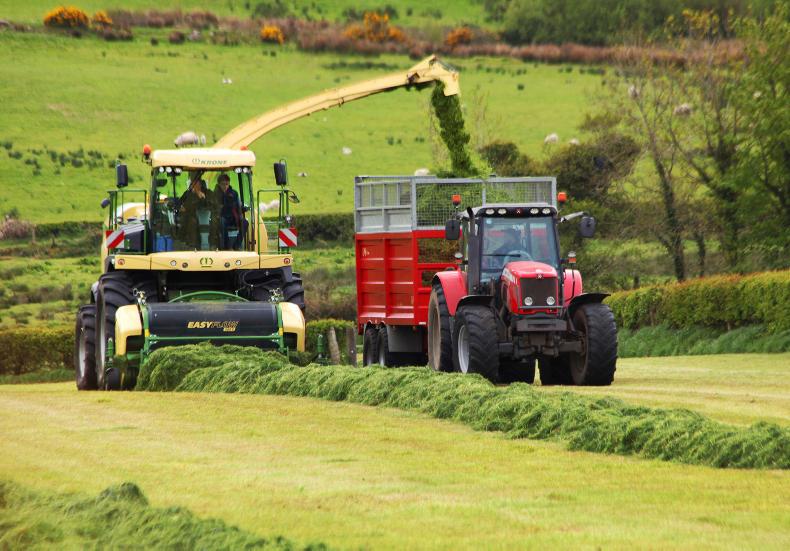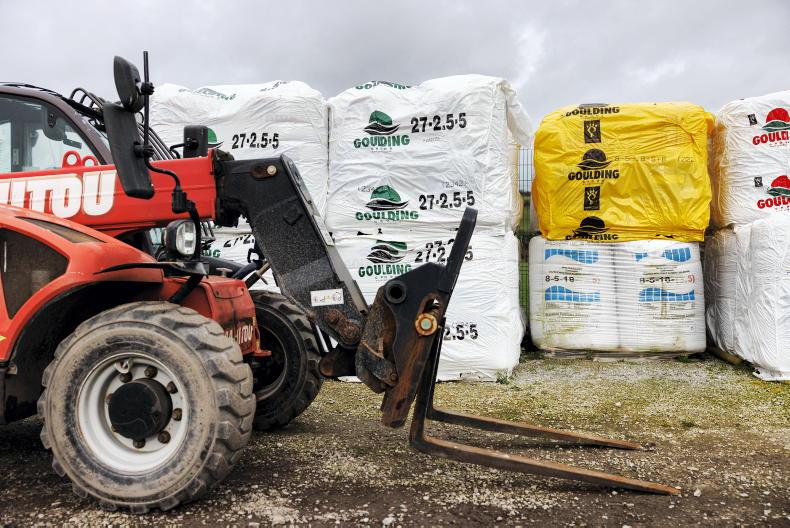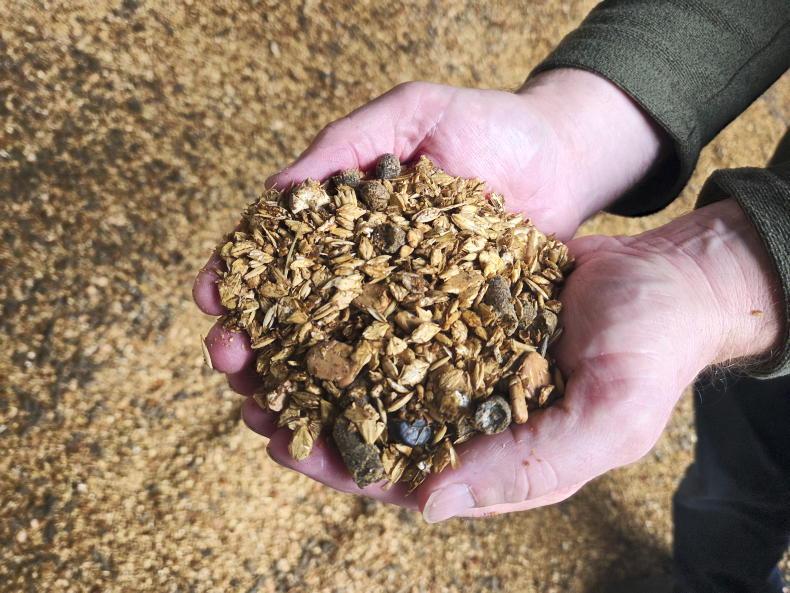There has been a flurry of silage activity in recent weeks between the spells of wet weather.
Where second-cut has been harvested, farmers should calculate a fodder budget for the winter ahead.
On farms that still have second cut to harvest, a fodder budget should be worked out at the earliest opportunity to make sure there is enough silage in place to feed cattle this winter.
The earlier you complete the fodder budget, the more options will be available should there be a deficit on farm. Outlined are five steps to completing a fodder budget.
1 Work out how much silage is on farm
The first step is work out how much silage is currently on farm. For pit silage, work out the volume of grass ensiled by measuring the length, width and average height of grass in the clamp in metres.
Multiply all three figures to get the cubic capacity. For silage at 30% dry matter, multiply the cubic capacity by 0.64 to convert to tonnes of silage in store.
At 35% dry matter, multiply the pit’s cubic capacity by 0.53 to convert to tonnes.
For bales, simply count the number on farm. Check the average weight by physically weighing, or if not practical, assume round bales weigh 850kg to 900kg. Total up the tonnage of silage in the clamp and in bales.
2 Work out what stock are likely to be wintered and their feed demand
Next, work out what stock are likely to be carried over winter and fed silage. For spring-calving cows that are weaned, intakes should be around 1t/head every month.
For autumn- and spring-calving cows in milk, intakes will be closer to 1.5t/head every month. For weanlings, intakes will be around 0.75t/month, with forward stores eating close to 1t/month.
Tally up the number of stock and the volume of silage likely to be needed from housing until the typical turnout date.
3 Build in a safety margin
Factor in a safety buffer of extra fodder just in case of an early winter, or late spring. In the worst case scenario, both situations could materialise. Having a buffer of one month’s silage at maximum stocking rates is recommended.
4 Work out if fodder demand exceeds volumes on farm
Once you know how much silage is on farm and livestock demand, compare both figures. If fodder demand exceeds the tonnage on farm, there is a deficit to be filled.
If fodder demand is less than the tonnage on farm, then there should be adequate winter feed in place, provided stock numbers do not increase between now and spring.
5 Take early action to correct fodder deficits
If a fodder deficit exists, take early action to increase the options available. This includes taking out surplus grass in August for bales, or closing off fields for a small third cut.
Other options include:
Early weaning to reduce silage intakes in spring calving cows.Restricting silage intakes for cows in good body condition.Offloading surplus stock and barren cows.Increasing meal levels to finishing cattle.Finally, carry out the fodder budget again in autumn as the situation changes. You can double check your calculations using our fodder budget calculator at https://www.farmersjournal.ie/toolbox/fodder.php
Read more
Tillage sector critical to the future of all sectors
Ploughing to raise admission fees
There has been a flurry of silage activity in recent weeks between the spells of wet weather.
Where second-cut has been harvested, farmers should calculate a fodder budget for the winter ahead.
On farms that still have second cut to harvest, a fodder budget should be worked out at the earliest opportunity to make sure there is enough silage in place to feed cattle this winter.
The earlier you complete the fodder budget, the more options will be available should there be a deficit on farm. Outlined are five steps to completing a fodder budget.
1 Work out how much silage is on farm
The first step is work out how much silage is currently on farm. For pit silage, work out the volume of grass ensiled by measuring the length, width and average height of grass in the clamp in metres.
Multiply all three figures to get the cubic capacity. For silage at 30% dry matter, multiply the cubic capacity by 0.64 to convert to tonnes of silage in store.
At 35% dry matter, multiply the pit’s cubic capacity by 0.53 to convert to tonnes.
For bales, simply count the number on farm. Check the average weight by physically weighing, or if not practical, assume round bales weigh 850kg to 900kg. Total up the tonnage of silage in the clamp and in bales.
2 Work out what stock are likely to be wintered and their feed demand
Next, work out what stock are likely to be carried over winter and fed silage. For spring-calving cows that are weaned, intakes should be around 1t/head every month.
For autumn- and spring-calving cows in milk, intakes will be closer to 1.5t/head every month. For weanlings, intakes will be around 0.75t/month, with forward stores eating close to 1t/month.
Tally up the number of stock and the volume of silage likely to be needed from housing until the typical turnout date.
3 Build in a safety margin
Factor in a safety buffer of extra fodder just in case of an early winter, or late spring. In the worst case scenario, both situations could materialise. Having a buffer of one month’s silage at maximum stocking rates is recommended.
4 Work out if fodder demand exceeds volumes on farm
Once you know how much silage is on farm and livestock demand, compare both figures. If fodder demand exceeds the tonnage on farm, there is a deficit to be filled.
If fodder demand is less than the tonnage on farm, then there should be adequate winter feed in place, provided stock numbers do not increase between now and spring.
5 Take early action to correct fodder deficits
If a fodder deficit exists, take early action to increase the options available. This includes taking out surplus grass in August for bales, or closing off fields for a small third cut.
Other options include:
Early weaning to reduce silage intakes in spring calving cows.Restricting silage intakes for cows in good body condition.Offloading surplus stock and barren cows.Increasing meal levels to finishing cattle.Finally, carry out the fodder budget again in autumn as the situation changes. You can double check your calculations using our fodder budget calculator at https://www.farmersjournal.ie/toolbox/fodder.php
Read more
Tillage sector critical to the future of all sectors
Ploughing to raise admission fees










SHARING OPTIONS